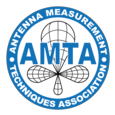Lars Jacob Foged,Lucia Scialacqua, Francesco Saccardi, Francesca Mioc, Davide Tallini, Emmanuel Leroux, Ulrich Becker, Javier Leonardo Araque Quijano, Giuseppe Vecchi, November 2014
Numerical modeling within Computational Electromagnetics (CEM) solvers is an important engineering tool for supporting the evaluation and optimization of antenna placement on larger complex platforms. While measurements are still required for final validation due to the conclusiveness and high reliability of measured data, numerical modeling is increasingly used in the initial stages of antenna placement investigation, optimization and to ensure that final testing, often a complex procedure, has a positive outcome. In some cases, the full-wave representation of the source antenna is unavailable to the designer in the format required by the CEM solver. This is often the case if the source antenna is from a third party. To overcome this problem, an equivalent computational model of the antenna must be constructed, bearing in mind that CEM solvers require an accurate source representation to achieve reliable results. Equivalent sources or currents implemented in the commercial tool INSIGHT have been adopted as an efficient diagnostics and echo reduction tool in general antenna measurement scenarios as discussed in [1-6]. The INSIGHT processing of measured antenna data was initially developed as a numerical representation of antennas in complex environment analysis for CEM solvers [7-10]. The main obstacle for widespread use of this method was the handling of the proprietary format of the equivalent currents. Commercial CEM providers are currently investigating and implementing domain decomposition techniques based on the near field description of the local domain. This development also provides a direct link between INSIGHT processing of measured antenna data and numerical simulation opening a range of interesting applications for using measured antennas in commercial numerical simulation tools as discussed in [11-12]. In flush-mounted antenna applications the measurement and subsequent INSIGHT processing has to be carefully performed. This paper discusses guidelines for the correct source antenna measurement, post processing and successive link to the commercial numerical tools for simulation. Application examples of the link using CST STUDIO SUITE® software [14-17] with flush mounted antennas and comparison with measurements of the full structure will be provided. [1] http://www.satimo.com/software/insight [2] J. L. Araque Quijano, G. Vecchi. Improved accuracy source reconstruction on arbitrary 3-D surfaces. Antennas and Wireless Propagation Letters, IEEE, 8:1046–1049, 2009. [3] J. L. A. Quijano, G. Vecchi, L. Li, M. Sabbadini, L. Scialacqua, B. Bencivenga, F. Mioc, L. J. Foged "3D spatial filtering applications in spherical near field antenna measurements", AMTA 2010 Symposium, October, Atlanta, Georgia, USA. [4] L. Scialacqua, F. Saccardi, L. J. Foged, J. L. Araque Quijano, G. Vecchi, M. Sabbadini, “Practical Application of the Equivalent Source Method as an Antenna Diagnostics Tool”, AMTA Symposium, October 2011, Englewood, Colorado, USA [5] J. L. Araque Quijano, L. Scialacqua, J. Zackrisson, L. J. Foged, M. Sabbadini, G. Vecchi “Suppression of undesired radiated fields based on equivalent currents reconstruction from measured data”, IEEE Antenna and wireless propagation letters, vol. 10, 2011 p314-317. [6] L. J. Foged, L. Scialacqua, F. Mioc,F. Saccardi, P. O. Iversen, L. Shmidov, R. Braun, J. L. Araque Quijano, G. Vecchi" Echo Suppresion by Spatial Filtering Techniques in Advanced Planar and Spherical NF Antenna Measurements ", AMTA Symposium, October 2012, Seattle, Washington, USA [7] E. Di Giampaolo, F. Mioc, M. Sabbadini, F. Bardati, G. Marrocco, J. Monclard , L. Foged, “Numerical modeling using fast antenna measurements”, 28th ESA Antenna Workshop on Space Antenna Systems and Technologies, June 2005 [8] L. J. Foged, F. Mioc, B. Bencivenga, E. Di Giampaolo, M. Sabbadini “High frequency numerical modeling using measured sources”, IEEE Antennas and Propagation Society International Symposium, July 9-14, 2006. [9] F. Mioc, J. Araque Quijano, G. Vecchi, E. Martini, F. Milani, R. Guidi, L. J. Foged, M. Sabbadini, “Source Modelling and Pattern Enhancement for Antenna Farm Analysis”, 30th ESA Antenna Workshop on Antennas for Earth Observation, Science, Telecommunication and Navigation Space Missions, May 2008 ESA/ESTEC Noordwijk, The Netherlands [10] L. J. Foged, B. Bencivenga, F. Saccardi, L. Scialacqua, F. Mioc, G. Arcidiacono, M. Sabbadini, S. Filippone, E. di Giampaolo, “Characterisation of small Antennas on Electrically Large Structures using Measured Sources and Advanced Numerical Modelling”, 35th Annual Symposium of the Antenna Measurement Techniques Association, AMTA, October 2013, Columbus, Ohio, USA [11] L. J. Foged, L. Scialacqua, F. Saccardi, F. Mioc, D. Tallini, E. Leroux, U. Becker, J. L. Araque Quijano, G. Vecchi, “Bringing Numerical Simulation and Antenna Measurements Together”, 8th European Conference on Antennas and Propagation, EuCAP, April 2014, Den Haag, Netherlands [12] L. J. Foged, L. Scialacqua, F. Saccardi, F. Mioc, D. Tallini, E. Leroux, U. Becker, J. L. Araque Quijano, G. Vecchi “Innovative Representation of Antenna Measured Sources for Numerical Simulations”, IEEE International Symposium on Antennas and Propagation and USNC/URSI, July 2014, Memphis, Tennese, USA [13] L. J. Foged, B. Bencivenga, F. Saccardi, L. Scialacqua, F. Mioc, G. Arcidiacono, M. Sabbadini, S. Filippone, E. di Giampaolo, “Characterisation of small Antennas on Electrically Large Structures using Measured Sources and Advanced Numerical Modelling”, 35th Annual Symposium of the Antenna Measurement Techniques Association, AMTA, October 2013, Columbus, Ohio, USA [14] CST STUDIO SUITE™, CST AG, Germany, www.cst.com [15] T. Weiland: "RF & Microwave Simulators - From Component to System Design" Proceedings of the European Microwave Week (EUMW 2003), München, Oktober 2003, Vol. 2, pp. 591 - 596. [16] B. Krietenstein, R. Schuhmann, P. Thoma, T. Weiland: "The Perfect Boundary Approximation Technique facing the big challenge of High Precision Field Computation" Proc. of the XIX International Linear Accelerator Conference (LINAC 98), Chicago, USA, 1998, pp. 860-862. [17] D. Reinecke, P. Thoma, T. Weiland: "Treatment of thin, arbitrary curved PEC sheets with FDTD" IEEE Antennas and Propagation, Salt Lake City, USA, 2000, p. 26.
